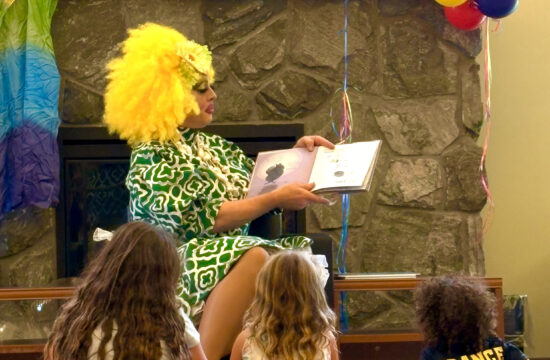By Adam Frisk
The Municipality of Dysart et al is suggesting cat owners should keep their felines inside, restricting them from roaming the great outdoors in an effort to deal with an apparent feral cat problem and to simply be a good neighbour.
The municipality launched a community education program aiming to share the benefits of keeping your feline companion inside your home. The initiative comes after a councillor suggested there’s a feral cat problem in the municipality.
“I’m getting some complaints about feral cats in the community and the havoc they are causing,” Pat Casey said during the Aug. 26 regular council meeting. “And I know we have a canine by-law under dog control and I would suggest it’s becoming more of an issue, fast.”
Casey did not provide examples of community complaints regarding the feral cats during the council meeting but suggested that it’s an increasing problem.
“I think a public education program of making sure that they look after your individual pet is something we could lead with and if it doesn’t help the situation then we got to move to putting some rules in place to look after that,” Casey said. “I hate more rules but if people aren’t going to look after their animals on that note then we have to jump in.”
The municipality launched the public education campaign the following day, posting on social media an infographic highlighting what it says are “several benefits of keeping cats indoors.”
“Currently, we only have a Canine Control By-law in place, but before considering a new by-law for our feline friends, we want to focus on education and community dialogue,” reads the social media post. “We’ve identified several benefits of keeping cats indoors, along with some creative ways to keep them entertained and engaged. We’re eager to hear your thoughts and ideas on this matter!”
Some of the benefits the infographic lists include: increased lifespan, safety from traffic, protection from predators and prevented fights with other animals.
The social media post does not mention feral cats, but rather focuses on domestic felines.
When reached by The Echo to clarify whether it’s more of a domestic cat issue rather than a feral problem, the councillor said: “It’s both.”
“People let their cats out at night and they just wander off onto someone else’s property who may or may not have a dog and the next thing you know the dog starts barking and waking everybody up,” Casey explained in a telephone interview. “Not only that, they’re using everybody else’s gardens as litter boxes and stuff like that. So it’s about taking responsibility for their own pets, is what we’re after.
“It’s both feral and domesticated cats doing the same thing. It’s a two-part problem. It’s starting to draw in the coyotes into town too,” Casey said.
The councillor said a constituent captured images of a coyote on a trail camera recently.
Hailey Cole, supervisor of municipal law enforcement, admitted that should it come to it, “regulating cats is going to be a difficult task if we decide to take it on.”
“But public education is absolutely in our scope right now,” Cole told council.
Cole went on to say that should a by-law be required, she would have to inquire with other municipalities to see what a feline control by-law would look like.
“That’s my suggestion, do the public education first and if it doesn’t fly then we will have to do something about it,” Casey said.
Several Ontario municipalities have by-laws in place for cat control. In Ottawa, for example, cat owners are not required to keep their cat leashed or indoors but rather owners must “control kitty’s outdoor activities and take responsibility by not allowing their cat to cause damage to or disturbance on other residents’ property.”
In Peterborough, cat owners face stiffer by-laws. Owners are required to register each feline and pay an annual licensing fee. Owners of more than one cat must have their animals spayed or neutered. No more than three cats are permitted in one household and owners must not permit their cats to be off their own property.
According to the Animal Alliance of Canada (AAC), a non-profit organization that works to protect all animals and promote a harmonious relationship between humans, animals, and the environment, says that by-laws don’t actually help with controlling feral cat populations.
“The only way to really help in a feral situation is to organize within the community and to set up spay/neuter programs for feral colonies,” Liz White, founding director of AAC, said in a telephone interview. “Ultimately the colonies just disappear because they can’t reproduce and often they are not long-lived because they’ll be predated upon or the weather is really bad for them or whatever, but it’s pretty tough to live outside.”
White acknowledges that rounding up cats for a spay/neuter program isn’t exactly the easiest thing to do but it’s the best way to reduce the size of colonies.
“Once the animals are released back outside, what it means is there’s a population of cats that some or hopefully many that can’t reproduce that are eating the food supply and so it makes it harder for those that are still able to reproduce to continue doing so,” White explained. “It begins to reduce the colonies way down.”
However, White said that if people are going to have unspayed or neutered animals such as barn cats or domestic cats that roam outside, they’re going to reproduce and then the community will end up with strays, whether there’s a by-law in place or not.
The AAC founding director said that prohibiting domestic cats from roaming the great outdoors would be a “very positive” step in the right direction.
“There’s no way you can protect cats from every situation that they might face outdoors, and I know people say ‘Well that’s just normal,’ but the fact of the matter is they’re domestic, they’re not wild, and they often can’t protect themselves,” White said. “And they impact the bird population quite wildly. They’re good at getting rodents which is helpful, which is why a lot of people have them in barns. But from the cat’s point of view, it’s much healthier to keep the cat indoors.”
White said she would welcome a by-law mandating domestic cats to remain inside, but would, however, “be quite vigorously opposed” to a by-law prohibiting the feeding of feral cats.
“It’s a compassionate thing to do,” she said. “It’s kind of cruel to leave these animals without any help.”
As for the public education campaign, White said the fact that Dysart is taking this approach to start is a great first step.
“It sort of starts people thinking about it. A lot of people let their cats out and don’t even think about it,” she said.
White said the AAC is open to discussing with the municipality a humane way of handling the feral cat issue and to provide a voice for establishing a by-law should it arise.














